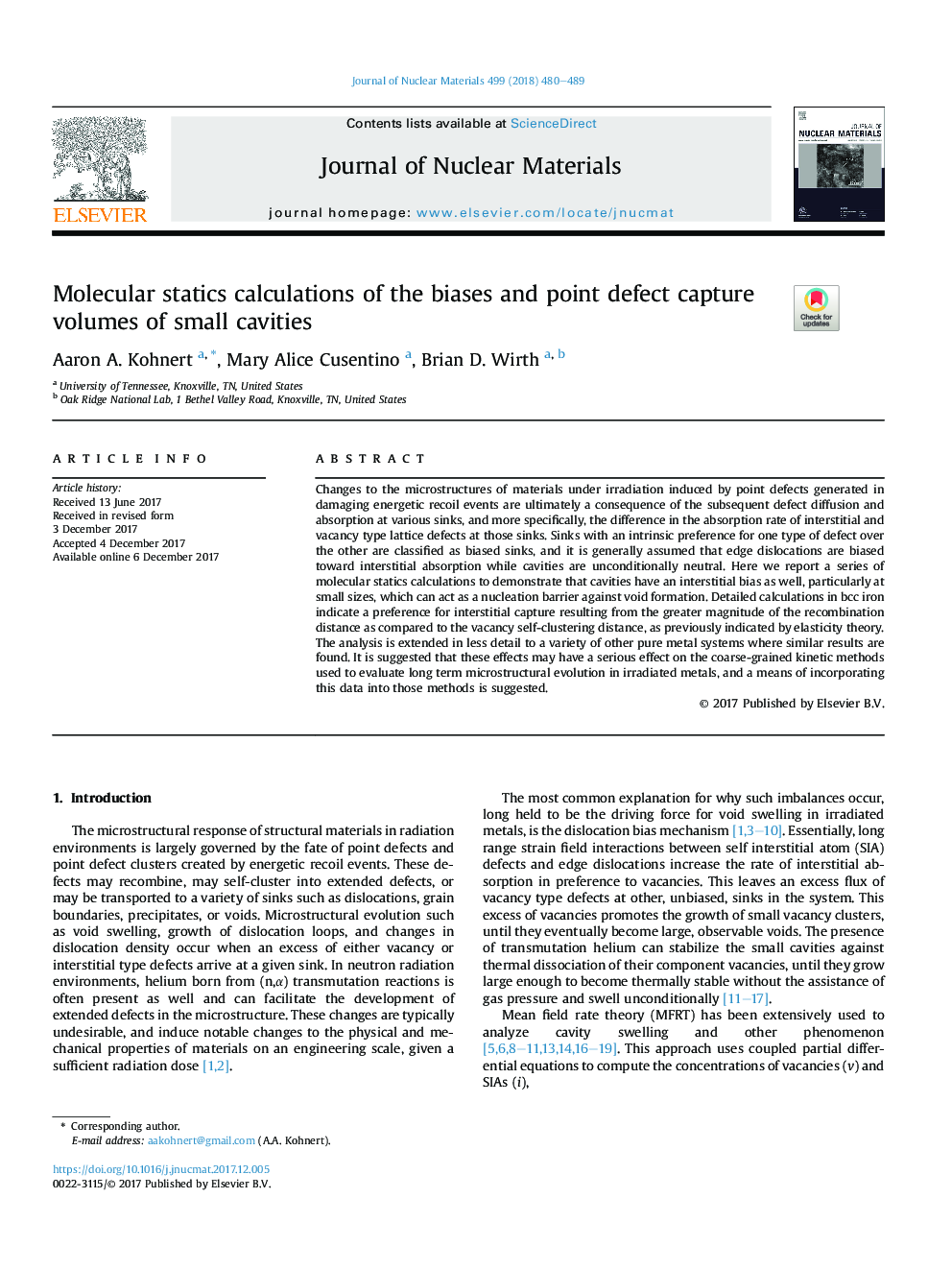| Article ID | Journal | Published Year | Pages | File Type |
|---|---|---|---|---|
| 7963641 | Journal of Nuclear Materials | 2018 | 10 Pages |
Abstract
Changes to the microstructures of materials under irradiation induced by point defects generated in damaging energetic recoil events are ultimately a consequence of the subsequent defect diffusion and absorption at various sinks, and more specifically, the difference in the absorption rate of interstitial and vacancy type lattice defects at those sinks. Sinks with an intrinsic preference for one type of defect over the other are classified as biased sinks, and it is generally assumed that edge dislocations are biased toward interstitial absorption while cavities are unconditionally neutral. Here we report a series of molecular statics calculations to demonstrate that cavities have an interstitial bias as well, particularly at small sizes, which can act as a nucleation barrier against void formation. Detailed calculations in bcc iron indicate a preference for interstitial capture resulting from the greater magnitude of the recombination distance as compared to the vacancy self-clustering distance, as previously indicated by elasticity theory. The analysis is extended in less detail to a variety of other pure metal systems where similar results are found. It is suggested that these effects may have a serious effect on the coarse-grained kinetic methods used to evaluate long term microstructural evolution in irradiated metals, and a means of incorporating this data into those methods is suggested.
Related Topics
Physical Sciences and Engineering
Energy
Nuclear Energy and Engineering
Authors
Aaron A. Kohnert, Mary Alice Cusentino, Brian D. Wirth,
